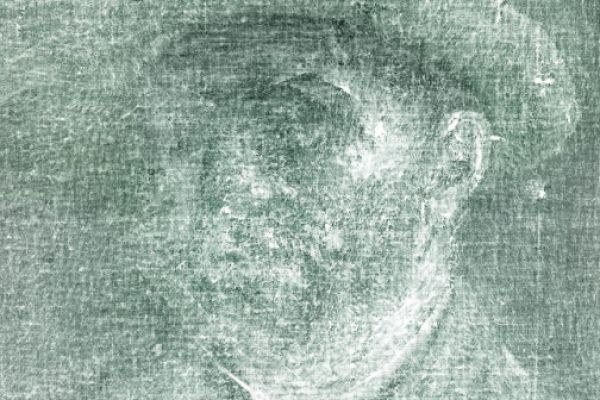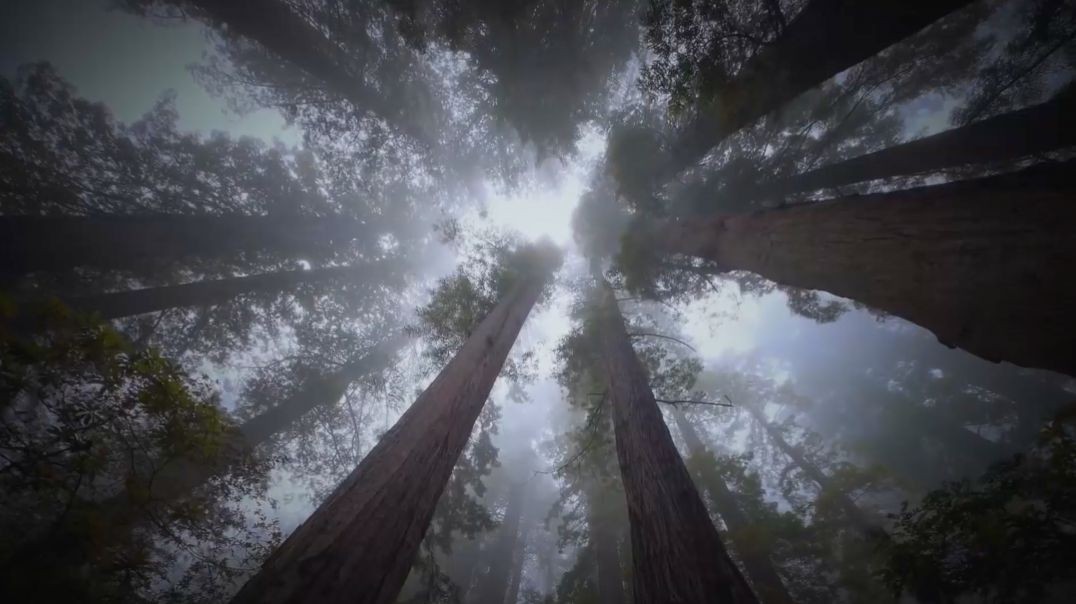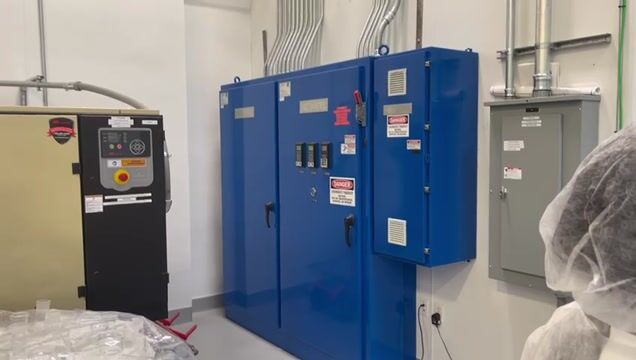Art History
Art History Is Full of Buried Treasure. Here Are 11 Stunning Images That Experts Found Hidden Beneath Famous Paintings
Advances in technology have led to a waterfall of discoveries.
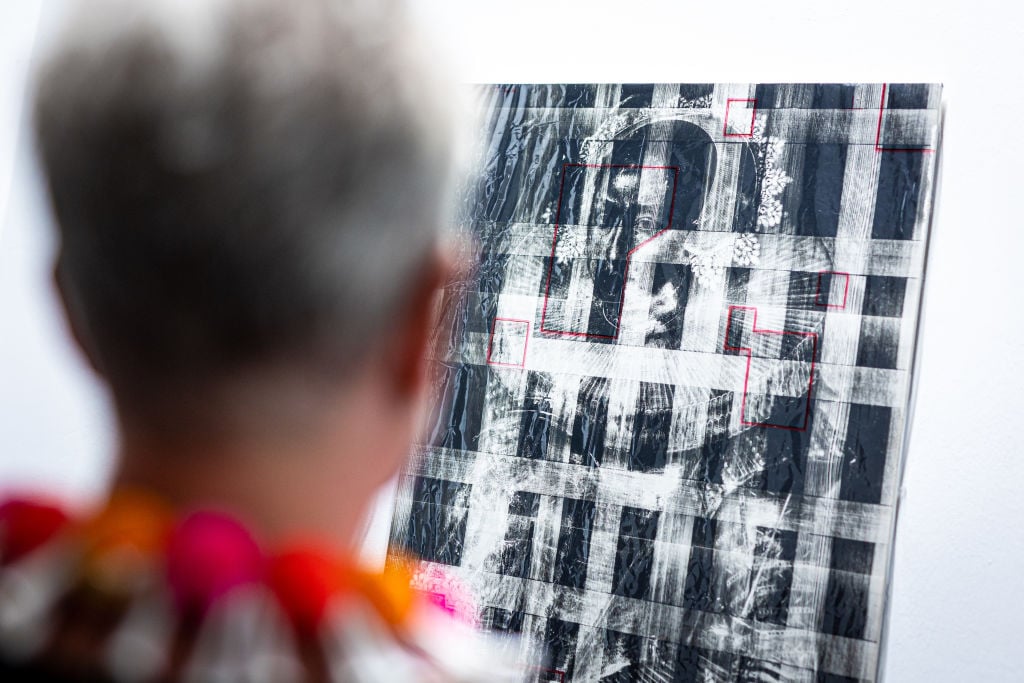
Whether intentionally or to save money on supplies, artists throughout history have re-used canvases. That means that, sometimes, hidden beneath the surface of the paint, there’s buried treasure.
In recent years, finding that treasure has gotten much easier. As non-invasive ultraviolet, infrared, and x-ray techniques improve, researchers are revealing images once considered forever locked away.
Indeed, there’s something of a gold rush around such images. A few scientists are even trying to resurrect them as new works of art, with the London-based project Oxia Palus training AI to take underpainted images by Picasso, Van Gogh, and Modigliani and render them as paintings (and, of course, as NFTs).
Excited by this influx of new artworks being found, Artnet News has gathered together some of the most astounding underpainting discoveries of the last few years.
Helen Saunders, Atlantic City (ca. 1915)
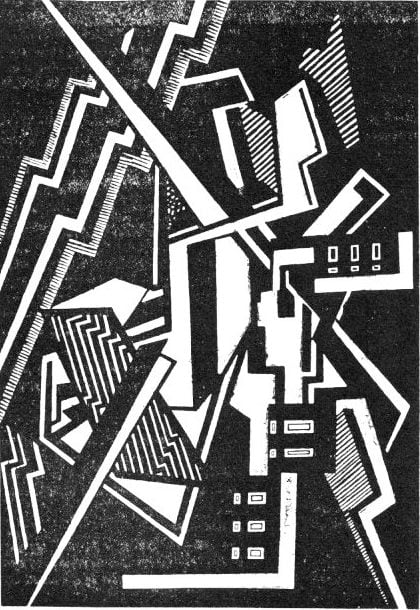
Helen Saunders, Atlantic City, (ca. 1915), reproduced in Blast no. 2, p. 57. © Estate of Helen Saunders.
When was the discovery made? 2019
Where is the work? Leeds Museums and Galleries, U.K.
What was discovered? Helen Saunders’s dynamic, abstracted composition Atlantic City (ca. 1915) had been lost for almost a century when it was discovered beneath Praxitella, Wyndham Lewis’s 1921 portrait of film critic Iris Barry. The uncovered work is a classic example of Vorticism, a British avant-garde movement inspired by Cubism and Futurism. Saunders was one of just two women in the Vorticist group, which had been founded by Lewis, and these two artists were close friends before they eventually fell out. The researchers Rebecca Chipkin and Helen Kohn, former students at the Courtauld Institute of Art in London, had suspected that a second image might have been concealed due to the cracked and uneven texture of Lewis’s surface.
Vincent Van Gogh earliest self-portrait
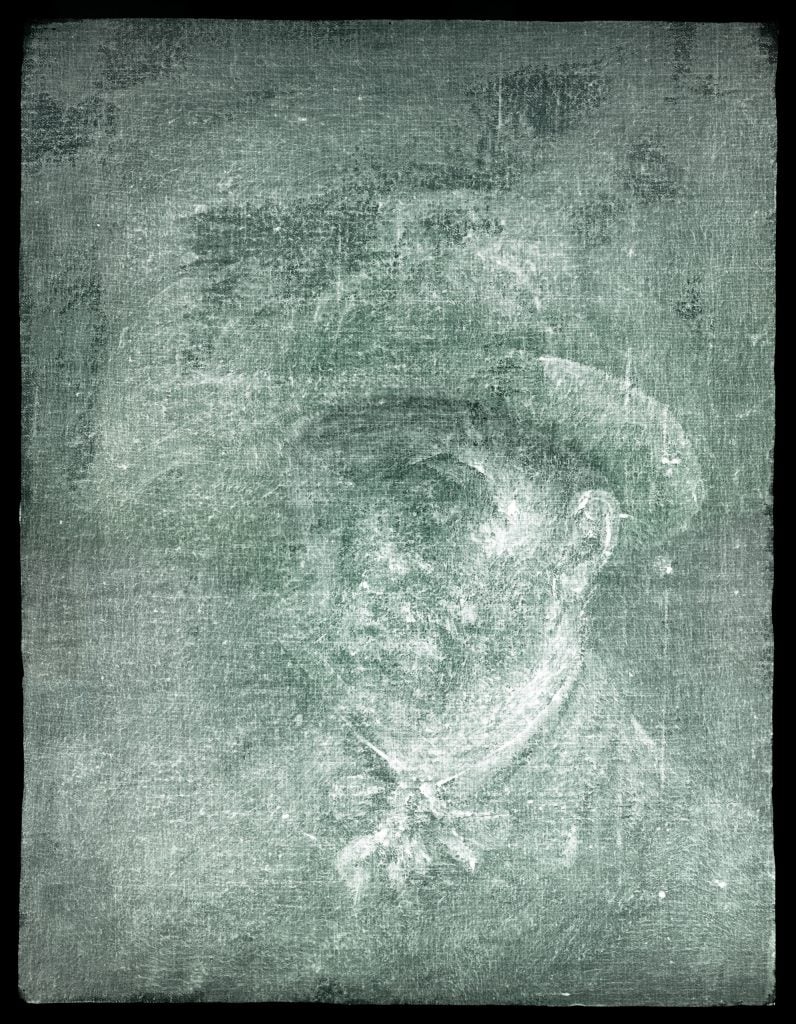
Van Gogh self-portrait revealed by an X- ray of Head of a Peasant Woman, 1885. Photograph: Graeme Yule/National Galleries of Scotland
When was the discovery made? 2022
Where is the work? National Galleries of Scotland
What was discovered? Conservators carrying out a routine x-ray on Van Gogh’s Head of a Peasant Woman (1885) believe they may have discovered the Post-Impressionist’s first ever self-portrait. What can be seen of the man, who is wearing a brimmed hat and neckerchief, is unmistakably Van Gogh, and scholars have never previously identified a self-portrait made earlier than 1886. Here’s how important the discovery is: Conservators are now planning to attempt the risky task of separating the works.
A self-portrait of Georges Seurat in A Young Woman Powdering Herself (c.1890)
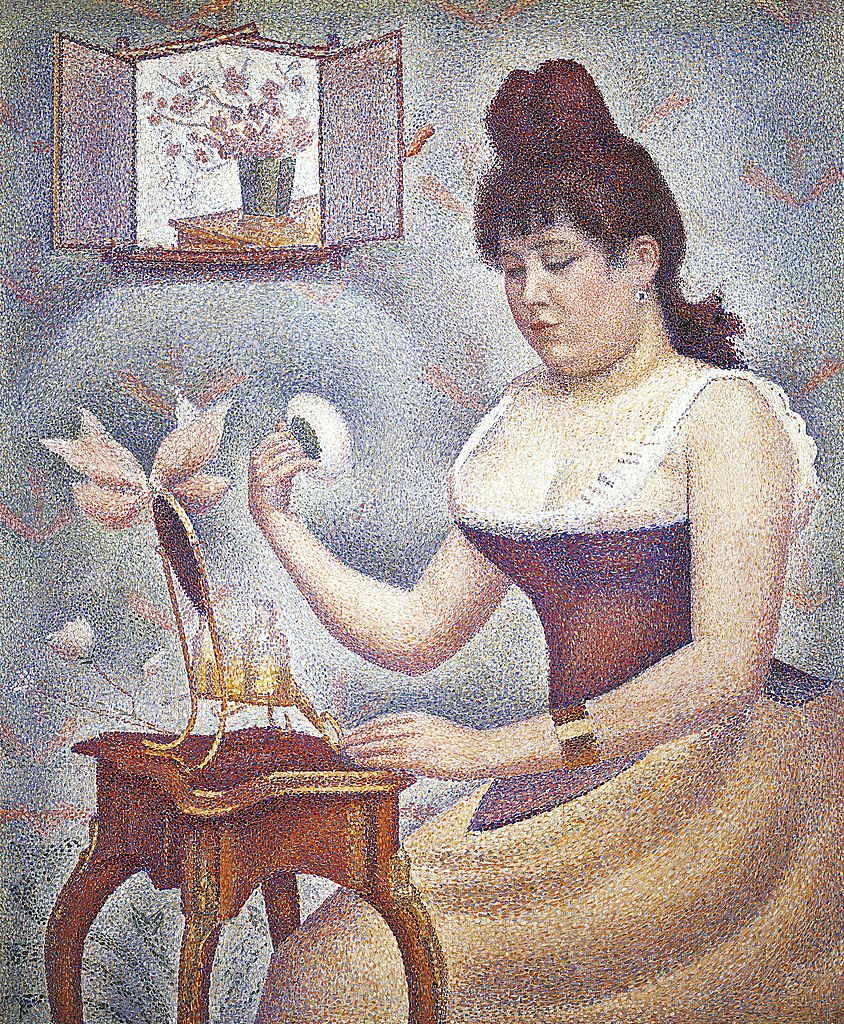
Georges Seurat, Young woman powdering herself (1889-1890). Photo by DeAgostini/Getty Images; London, Courtauld Institute Of Art Gallery.
When was the discovery made? 2014
Where is the work? Courtauld Gallery, London
What was discovered? A mirror with a man’s face was found by x-ray analysis in the same spot where there is now a window in Seurat’s painting, just behind its main subject, Madeleine Knobloch. She was Seurat’s preferred model and secret mistress, so it is very likely the painter himself whose face was originally in the painting, peeping in at her. It has been speculated that Seurat hid himself to remain discreet and prepare the work to be exhibited publicly.
Portrait of a French official by Francisco Goya

Diagram of the image underlying the face in Portrait of Don Ramón Satué, compiled by Anna Krekeler. Image courtesy of Rijksmuseum/Conservation & Science Department.
When was the discovery made? 2011
Where is the work? Rijksmuseum, the Netherlands
What was discovered? A pair of researchers with advanced expertise in x-ray imaging, Koen Janssens and Joris Dik, decided to test a theory long held by art historians that Goya’s Portrait of Don Ramón Satué (1823) was keeping a secret. They were able to uncover the body and dress of a senior French official whose face was never completed. The trace of a special medal confirms that the sitter was high ranking. It may even be Joseph Bonaparte, which would mean it might have been painted over for political reasons.
Sketches for Leonardo da Vinci’s The Virgin on the Rocks (1483-86)

Leonardo da Vinci, The Virgin of the Rocks (1491–99, 1506–08). The lines show the underdrawing for the first composition, incorporating information from all technical images. Photo © the National Gallery, London.
When was the discovery made? 2005 and 2019
Where is the work? National Gallery, London
What was discovered? An underpainting showing how Leonardo played around with the composition of Virgin of the Rocks by adjusting the positions of Jesus and the angel was first detected in 2005. Some 14 years later, in 2019, these works could be much more clearly recovered thanks to the more sophisticated technologies of x-ray fluorescence scanning, which picked up on zinc in the materials da Vinci used, and hyperspectral imaging, which brought out the finer details. These findings were presented to the public in the National Gallery’s immersive “Leonardo: Experience a Masterpiece” exhibition in 2019.
Portrait of a model by Edgar Degas
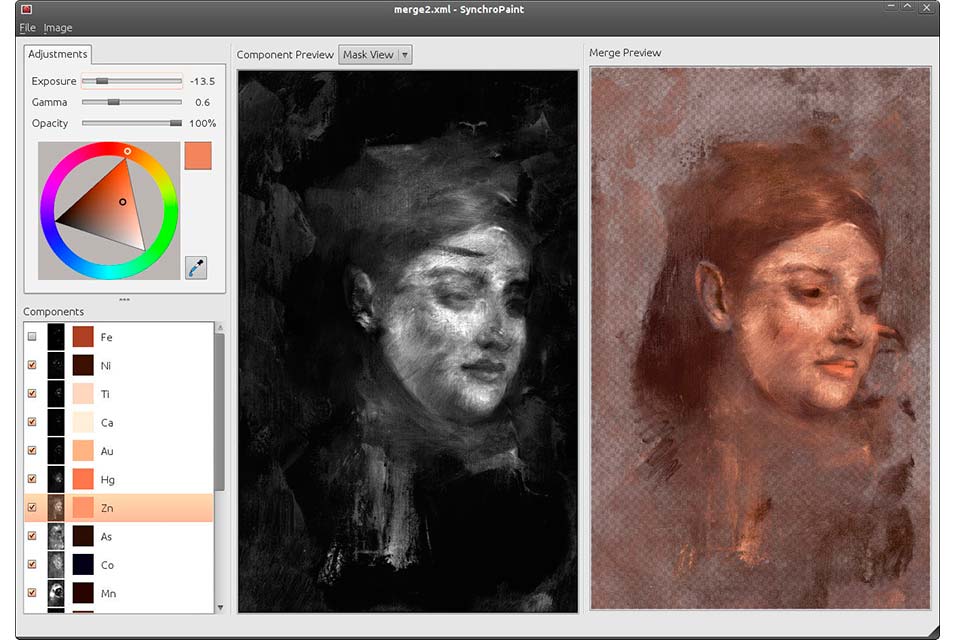
Degas’s process. Color reconstruction. Images courtesy of NGV / Australian Synchrotron.
When was the discovery made? 2016
Where is the work? National Gallery of Victoria, Australia
What was discovered? Unlike many other works on the list, Degas’s hidden depiction of his model Emma Dobigny, a popular model, was a poorly kept secret. His use of thin paint layers to produce Portrait of a Woman (1876) over the work meant the original image eventually began to bleed through (as early as 1922, experts were criticizing the work’s discoloration). As a result, the hidden portrait has been given new life by researchers who scanned the image in 2016.
Fragment of René Magritte’s La Pose enchantée (1927)
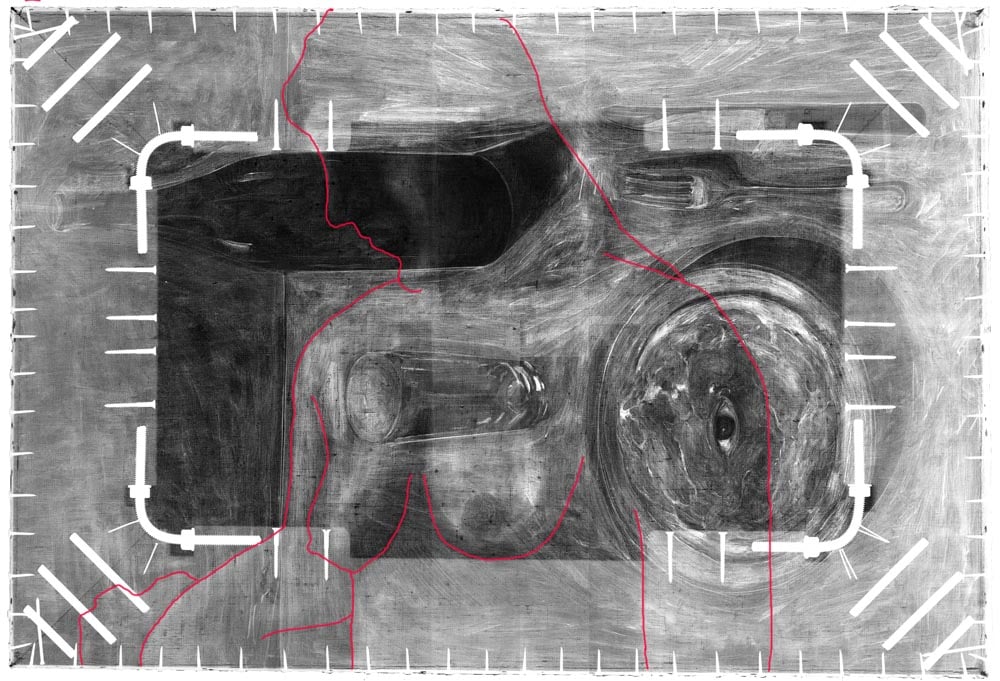
X-ray image of René Magritte, Le Portrait (The Portrait) (1935). Outline of part of Magritte, La Pose enchantée (The Enchanted Pose), 1927. Conservation department, Museum of Modern Art, New York. © Charly Herscovici-ADAGP-ARS, 2013.
When was the discovery made? 2016
Where is the work? Norfolk Museums Service, U.K.
What was discovered? While many hidden masterpieces remain unknown until the day of their discovery, La Pose enchantée (1927) was considered missing and was long known to us only from a black-and-white photograph. The mystery of its disappearance was solved when, during a routine inspection of La Condition humane (1935), a conservator noted that the colors on the canvas around the stretcher didn’t match those in the painting. By x-ray, researchers were able to figure out that the Surrealist had cut the lost work into pieces before reusing the canvas.
Self-portrait by Artemisia Gentileschi
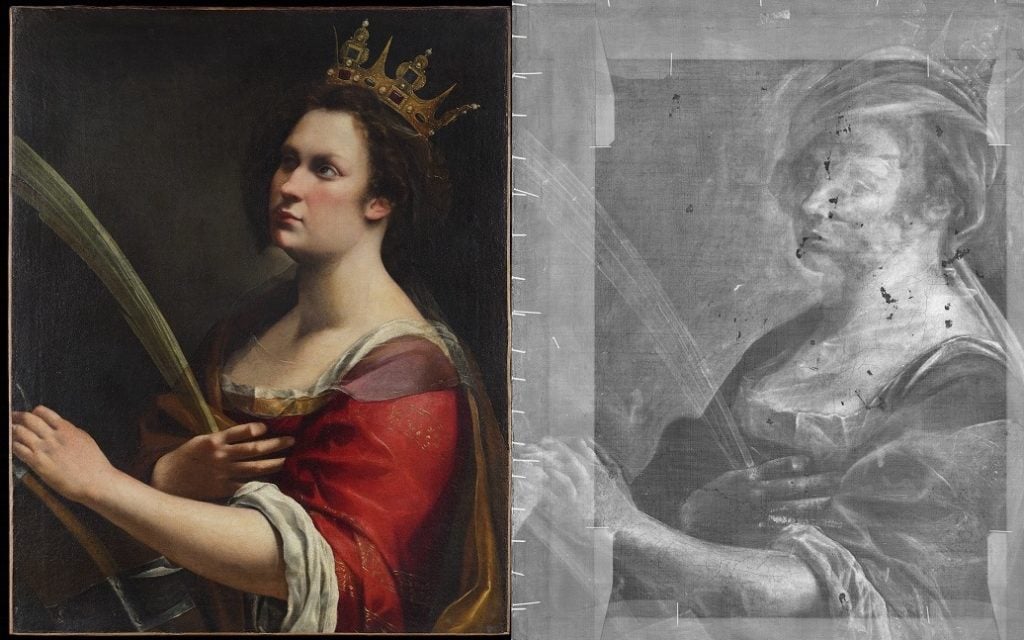
Left: Artemisa Gentileschi, Saint Catherine of Alexandria (1618–20). Uffizi Galleries, Florence. Right: the same portrait under X-Ray.
When was the discovery made? 2019
Where is the work? Uffizi Gallery, Florence
What was discovered? Soon after London’s National Gallery acquired Gentileschi’s Self-Portrait as Saint Catherine of Alexandria (c.1615) for £3.6 million ($4.6 million), the Uffizi Gallery was lucky enough to find out it had its own version already. The catch is that it is so far only visible by x-ray, trapped beneath the painting Saint Catherine of Alexandria (1618-20). What distinguishes the self-portrait from the surface work is that the subject’s face is turned towards the viewer and the figure is wearing a turban. The restorers have concluded that the artist must have reused a single preparatory drawing for multiple works, making new variations in each case.
An anonymous landscape behind a Picasso
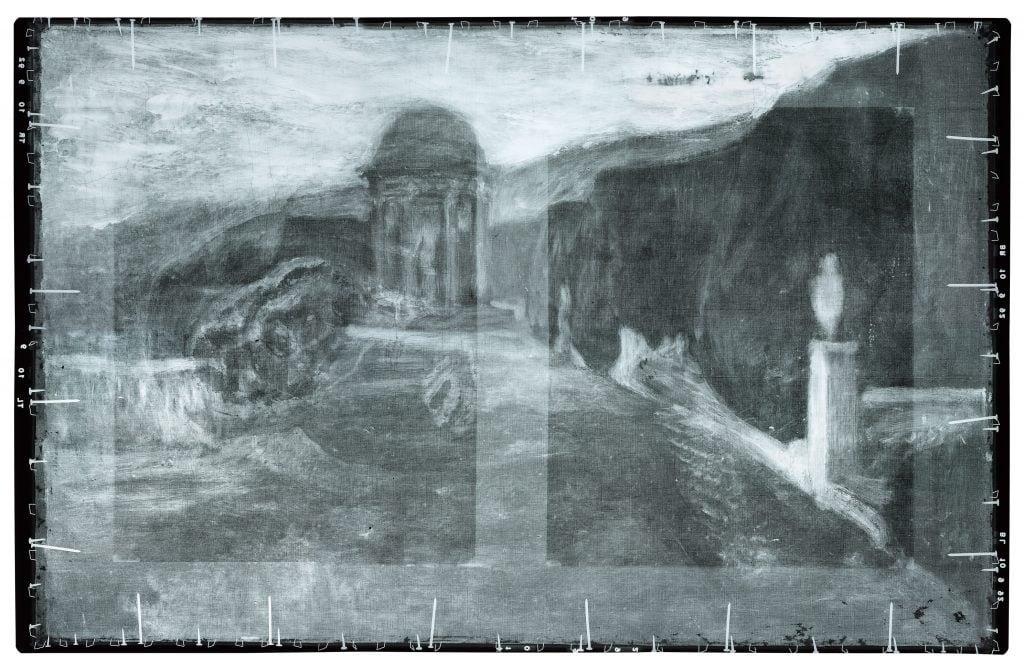
X-radiograph of Picasso’s Crouching Beggarwoman, rotated 90 degrees counter-clockwise, showing the landscape of the Labyrinth of Horta, Barcelona, beneath. © Art Gallery of Ontario (AGO)
When was the discovery made? 2018
Where is the work? Art Gallery of Ontario, Canada
What was discovered? X-rays may be able to reveal an underpainting, but they can’t always bring complete clarity. Researchers found a landscape underneath Picasso’s The Crouching Beggar (1902), which they believe depicts Parc del Laberint d’Horta in Barcelona, but they could only guess at the identity of the artist who made it. The top suspect is one Santiago Rusiñol. Though Picasso essentially destroyed Rusiñol’s painting with his own, it would appear he took some inspiration from it as well: the roll of the distant hills echoes the curve of Picasso’s beggarwoman. Experts had suspected that the painting might be hiding something since way back in 1992, when they noticed that the surface texture was not always consistent with the brushstrokes and that unexpected colors could been through the cracks.
Portrait by Rembrandt van Rijn
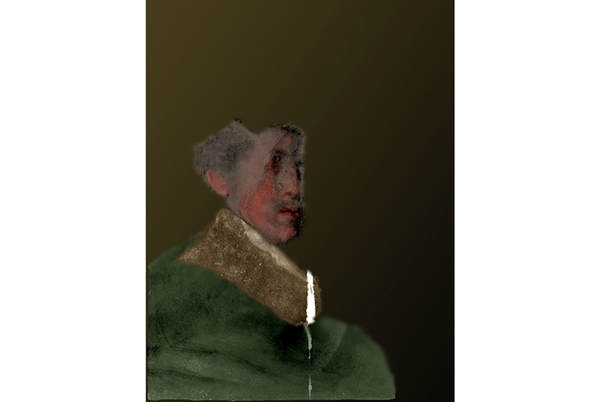
Tentative color reconstruction of Rembrandt hidden portrait.
Photo: Courtesy J. Paul Getty Trust.
When was the discovery made? 2013
Where is the work? J. Paul Getty Museum, Los Angeles
What was discovered? Researchers have long been curious about a strangely dense patch of Rembrandt’s Old Man in Military Costume (ca. 1630), which they have believed could be another painting since the first scan of the painting way back in 1968. It took a while for x-ray technologies to be able to pick much up since the artist used paint with the same chemical compound in both cases, but with the arrival of sophisticated techniques those studying the work have been able to get a clearer image of a hidden male face. The mercury and lead detected suggest he has vermilion flushed cheeks, while the copper in his cloak suggest it was painted green.
Portrait of Amedeo Modigliani’s ex-lover Beatrice Hastings
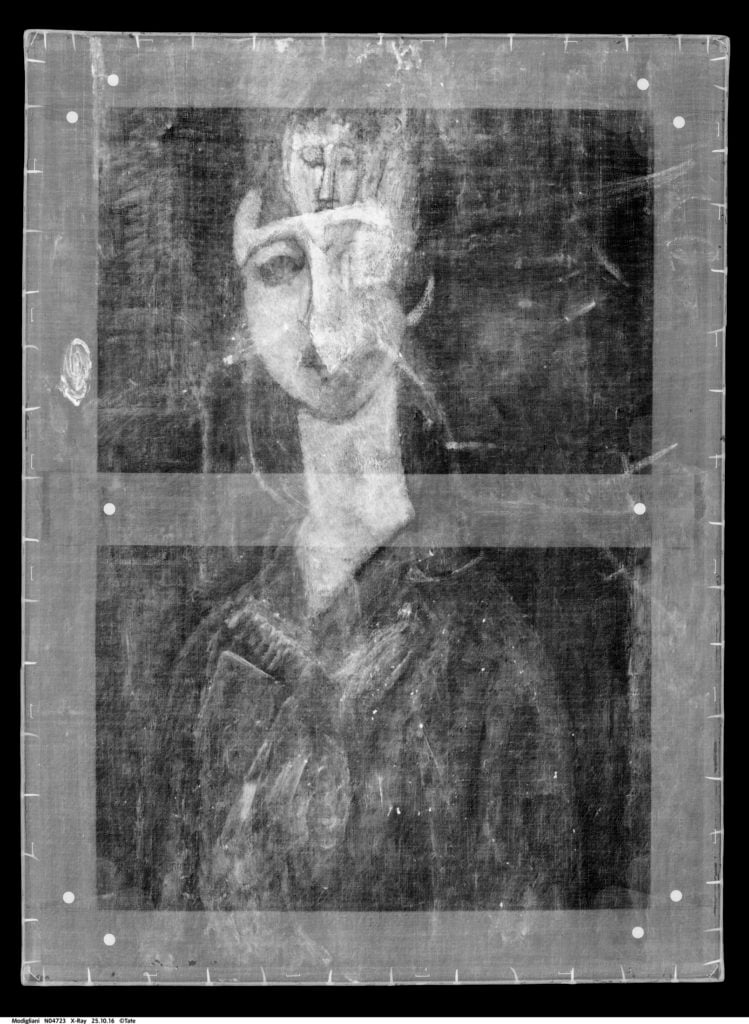
X-radiograph showing an earlier figure painted beneath the surface of Modigliani’s Portrait of a Girl. Image © Tate
When was the discovery made? 2017
Where is the work? Tate, London
What was discovered? Amedeo Modigliani may have had reasons for covering his tracks when painting over old pictures. Another woman has been found beneath his Portrait of a Girl (1917), in a portrait that is almost full length and visible with impressive clarity. She is believed to be the artist’s former lover Beatrice Hastings, with whom he had a messy breakup around 1916, offering a solid possible motive for reusing the canvas.
Follow Artnet News on Facebook:
